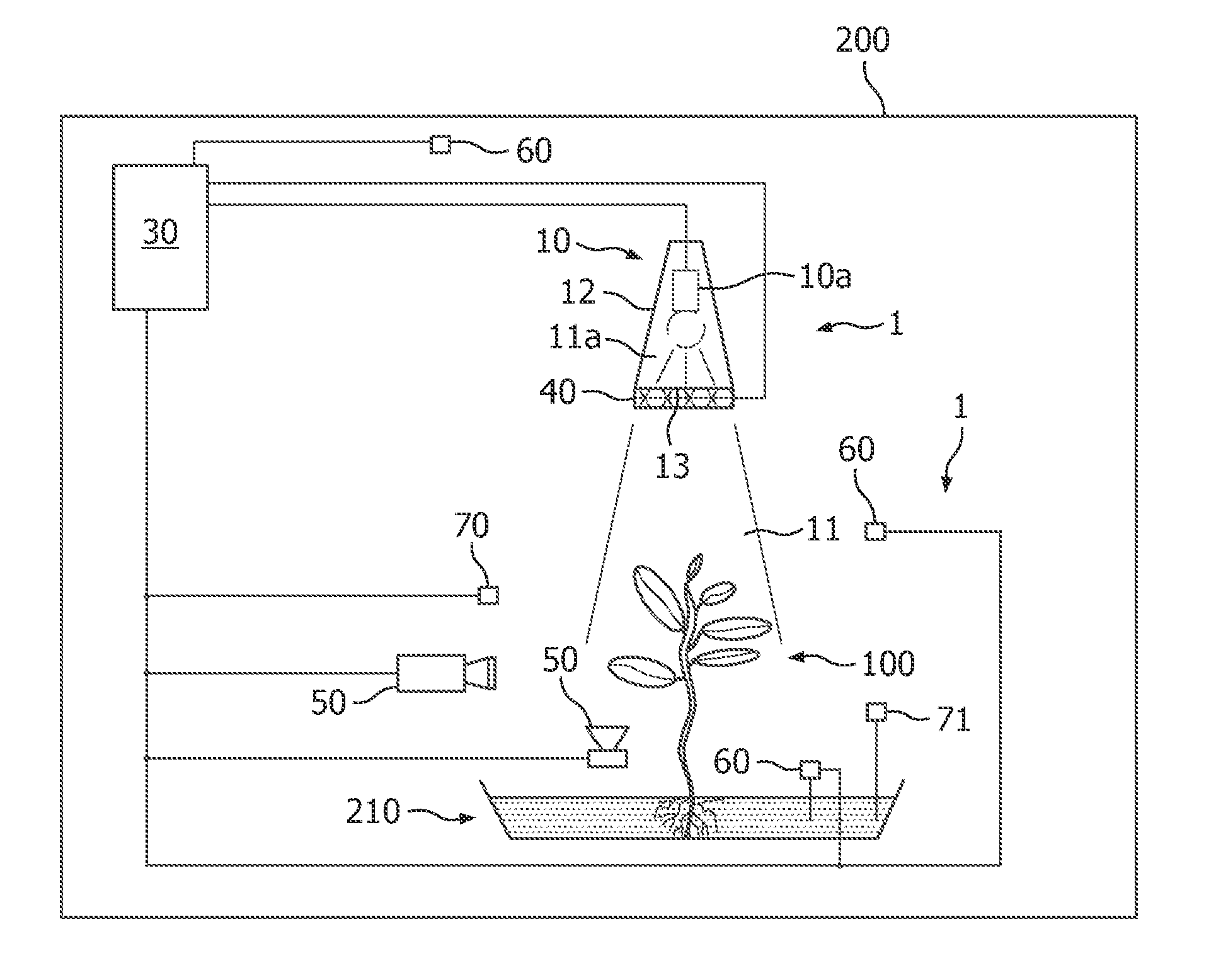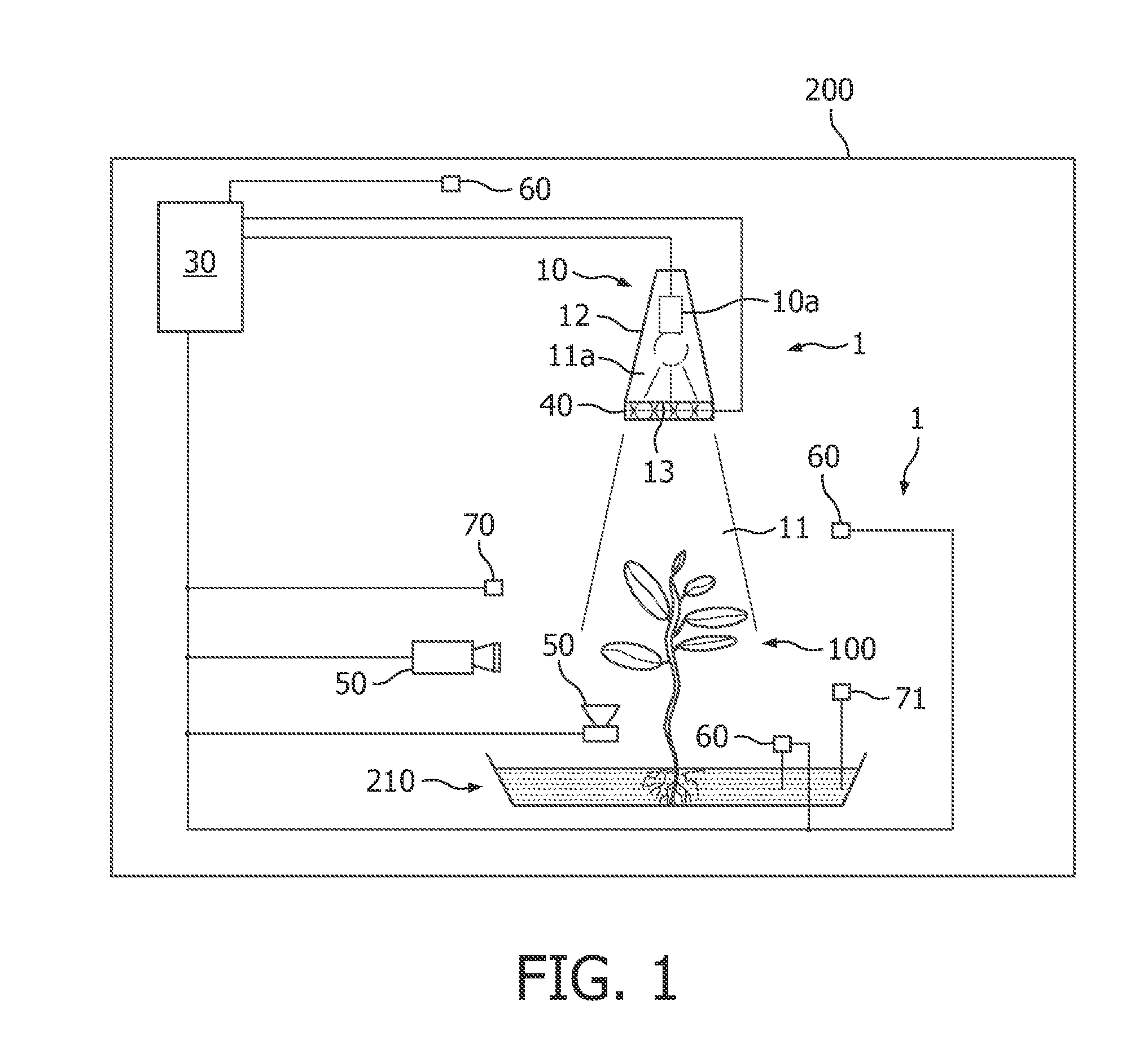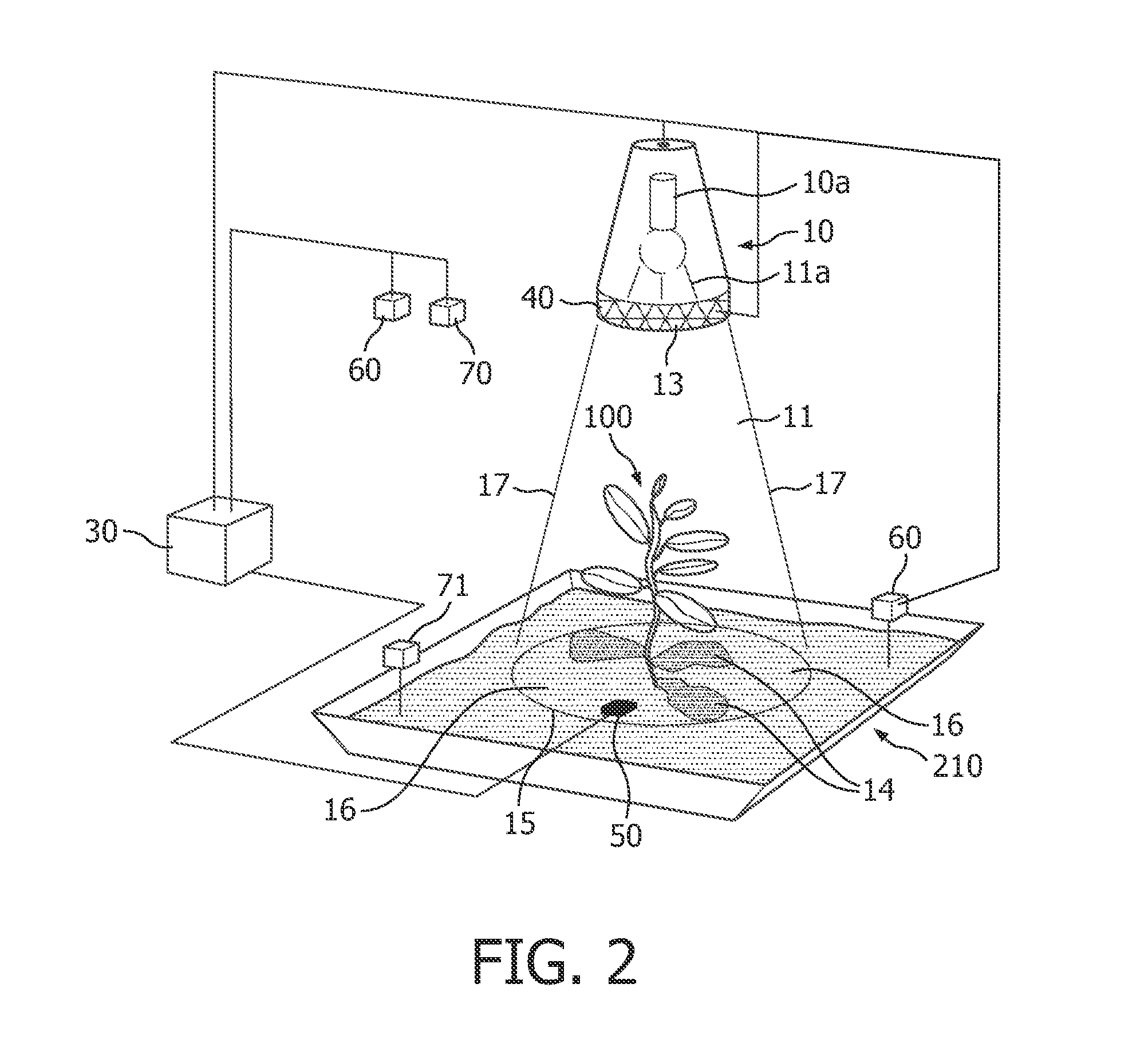Illumination arrangement for illuminating horticultural growths
a technology of horticultural growth and illumination arrangement, which is applied in the direction of horticulture, saving energy measures, lighting and heating apparatus, etc., can solve the problems of high energy cost, relative difficulty in adjusting the light source, and many light pollution of the present system, so as to efficiently illuminate the horticultural growth
- Summary
- Abstract
- Description
- Claims
- Application Information
AI Technical Summary
Benefits of technology
Problems solved by technology
Method used
Image
Examples
Embodiment Construction
[0044]FIG. 1 schematically depicts an illumination arrangement 1 for illuminating a horticultural growth 100. The illumination arrangement 1 is arranged in a climate controlled room 200, such as a greenhouse. By way of example, horticultural growth 100 is depicted, arranged in a flower box 210. The invention is however not limited to illumination arrangements 1 in greenhouses or to illumination arrangements 1 arranged over horticultural growth 100 or to illumination arrangements 1 during use.
[0045]The illumination arrangement 1 comprises a lighting unit 10 arranged to generate a beam of light 11. To this end, the lighting unit 10 comprises a light source 10a, arranged to generate light 11a. This light 11a may be further shaped into a beam by a (variable) collimator or (variable) other optics. In FIG. 1 (and FIG. 2), the further optics is a reflector or collimator 12 (further indicated as collimator), but alternatively or in addition, also other optics may be applied. The illuminatio...
PUM
 Login to View More
Login to View More Abstract
Description
Claims
Application Information
 Login to View More
Login to View More - R&D
- Intellectual Property
- Life Sciences
- Materials
- Tech Scout
- Unparalleled Data Quality
- Higher Quality Content
- 60% Fewer Hallucinations
Browse by: Latest US Patents, China's latest patents, Technical Efficacy Thesaurus, Application Domain, Technology Topic, Popular Technical Reports.
© 2025 PatSnap. All rights reserved.Legal|Privacy policy|Modern Slavery Act Transparency Statement|Sitemap|About US| Contact US: help@patsnap.com



